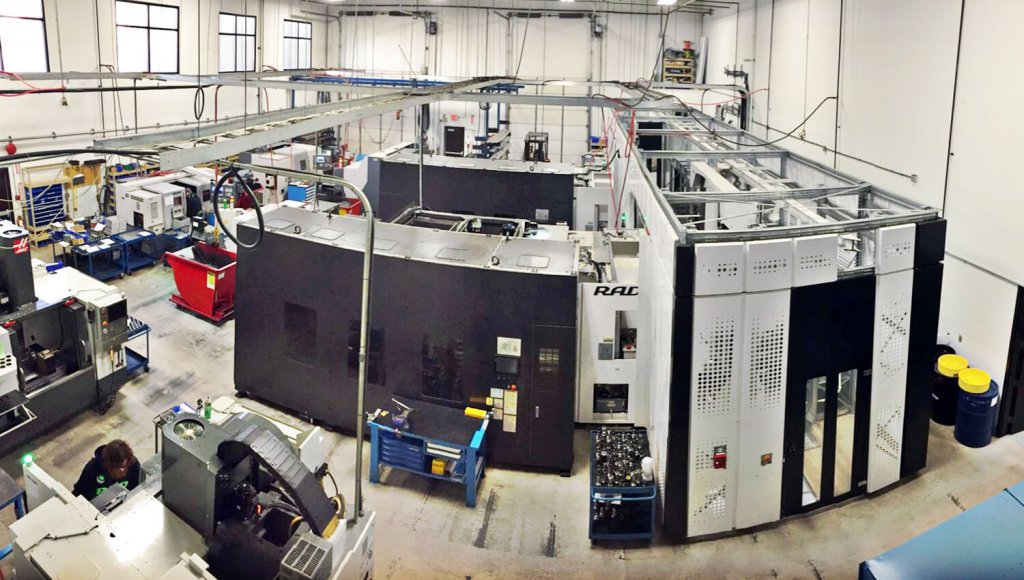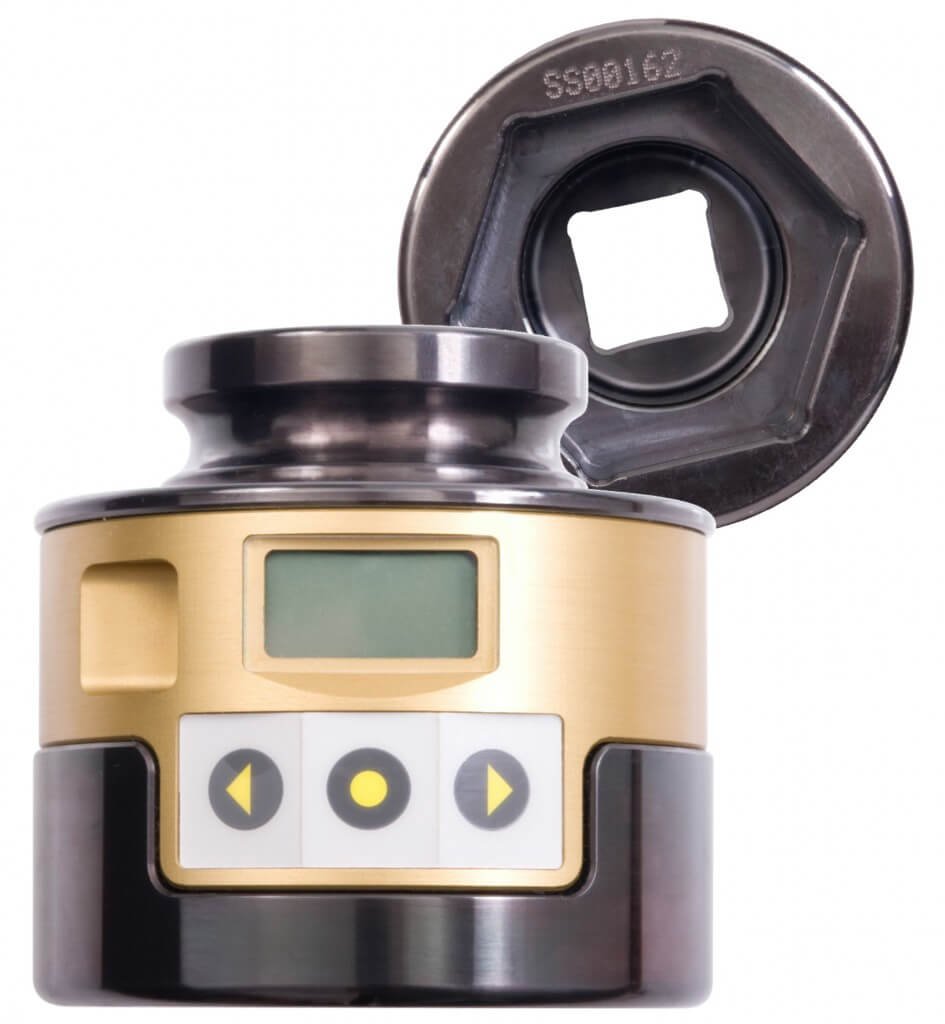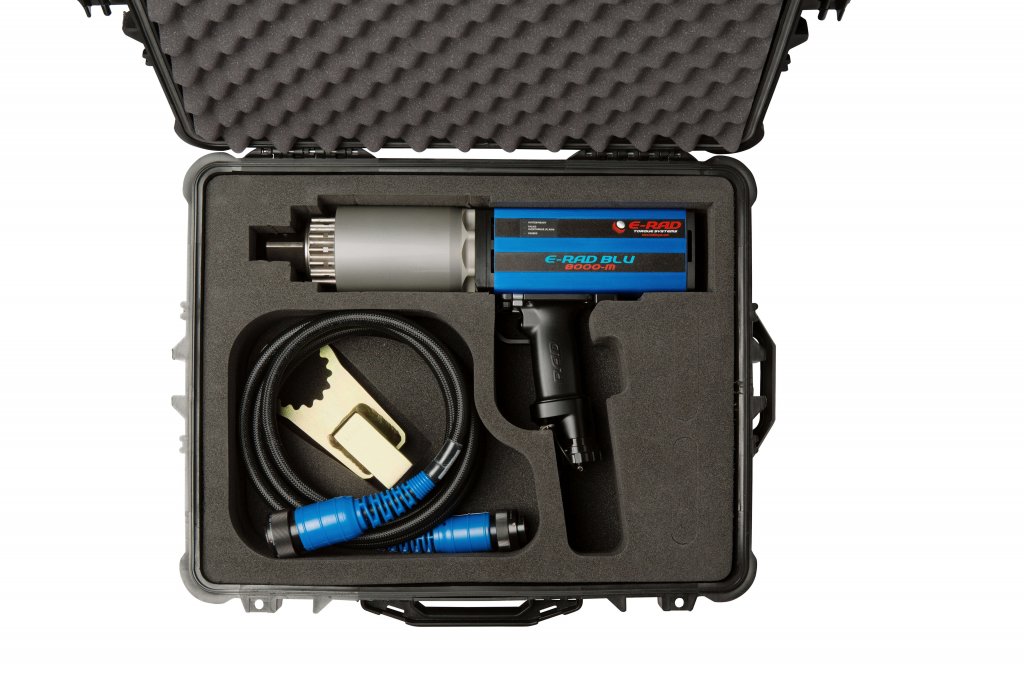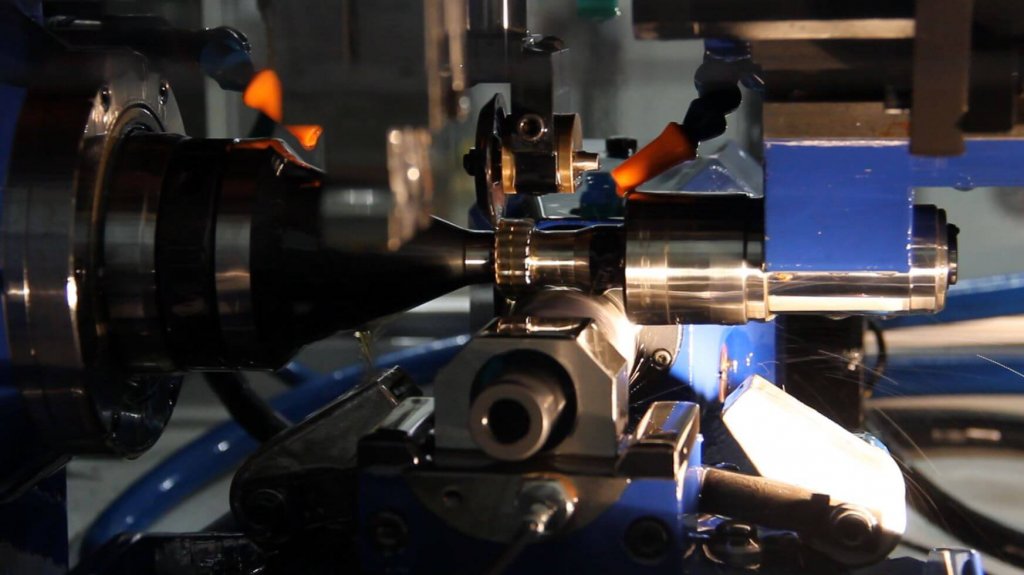By Michelle Froese, Senior Editor
Windpower Engineering & Development
This article is part of Windpower Engineering & Development’s April 2017 issue. A complete digital version of the issue is here.

An ISO 17025 accredited calibration laboratory, in New World Technology’s manufacturing facilities, ensures maximum quality and calibration traceability without use of a third party. It designs all tools according to CSA, CE, and UL safety standards.
Calibration is the process of configuring an instrument to provide a measurement within a set or acceptable range. It is used to ensure the accuracy of a tool, which is important in the wind industry. A couple loose bolts and the reliability of a wind-turbine’s tower or gearbox could come into question.
Eliminating or minimizing factors that cause inaccurate measurements is a fundamental aspect of tool design. Just ask Chris McKerihen, a Mechanical Engineer with RAD Torque Systems, a division of New World Technologies Inc. The company is a Canadian manufacturer of pneumatic, battery-powered, and electronic pistol grip torque wrenches.
“The aim of calibrating a tool, such as a torque wrench, is to ensure that it applies the torque the tool indicates it is applying. This may seem simple enough, but true calibration is a little more complicated than it sounds,” he says.
The calibration process typically involves using the tool to test samples of one or more known values, called calibrators. “This is done by gradually increasing the pressure to the tool while it is in factory, on a calibration stand, and connected to a digital readout transducer,” says McKerihen. A technician will then verify the torque output from the transducer and compare it to the test gage.
“This is the easy part,” he says. “You’re testing and double-checking the tool to confirm that it does what the manufacturer says it does.” This is an important step. Factory torque charts and tool certification verify its quality. However, such charts fail to account for many of the variables users will find within their specific application.

RAD Smart Sockets measure torque directly on a bolt up to 8,000 ft. lbs. It uses RAD Torque’s transducer technology with custom sockets to measure the torque applied to the bolt during a torque cycle. It is about the same size as a standard socket, has a built-in rechargeable battery, measures and displays peak torque, provides “pass” or “fail” indication, and logs all data (downloadable as XLS, CSV, or PDF).
“The big variable is the bolted joint. How long is the bolt? How dirty is the bolt? And how hard is the washer?” McKerihen points out that a galvanized bolt is going to act different than one that’s higher grade or lubricated. “There is no guarantee that the bolt used in your specific application is similar to the one for which the tool was initially calibrated. Many variables can affect calibration. So if anything changes in the environment, technically, the tool should be recalibrated for those variables.”
Torque is actually an indirect measurement of clamp load, he explains. “You can put the same torque value into apparently identical bolts and achieve different clamp loads. At the end of the day, clamping force is the primary goal and marker of an accurately bolted joint.”
McKerihen says it is still important to ensure that when a developer maintains, ‘This is a torque-critical application, and it must adhere to these standards,’ that you are using a calibrated certified tool. “However, a question still stands beyond a tool’s quality,” he adds. “And that is: are you sure you’re adhering to those standards for your job?” This is where it is key to understand an application and its requirements.
“Some wind techs get too focused on specific torque values that aren’t necessarily representative to what matters in the end, which is clamp load. Accurate calibration comes down to a genuine understanding of the bolt, the joint, and the quality of that joint — and what it means to the selected torque value of your wrench,” he says.
To better understand application-specific calibration, RAD Torque engineers have attempted to replicate what may happen in the field. “In our own internal testing and calibration, we’ve built mock flanges and purchased different types of wind-tower bolts. What happens is once you’ve strained that bolt with an applied torque, it changes the dynamics of it. So the second time you tighten it, it acts a little differently.”
When it comes to calibrating tools for an energy industry, this slight difference matters. “Under and particularly over-bolting is potentially dangerous and hazardous to equipment. The latter can eventually lead to a broken or fragmented bolt, and that can cost project owners a lot in future downtime,” says McKerihen. In these testing scenarios, the engineers have tried to characterize what happens in the field and how to best address how such variables affect calibration.
“Really, the best way to ensure that a certain torque value has been delivered is with something like a smart socket, one that lets users calibrate their tool to a specific application in the field.”
Traceable torque
The smart socket is a small device that measures actual torque applied to a bolt during a torque cycle. According to McKerihen, it acts as an audit device that lets users calibrate a tool while in the field for their set application. “We call it the lie detector because it logs the action of every completed torque,” he says.

Tool calibration is important but so is a tool’s weight and size. Large pneumatic or electric torque wrenches used on megawatt-sized turbine towers can weigh over 30 lbs. RAD Torque has used new materials and heat treatment processes just to keep the size and weight count down, while ensuring the reliability and safety of the tool remains high. For example, the company’s E-RAD 10K offers excellent power-to-weight ratio. It weighs only 15 kg with a torque range of 1,350 to 10,000 Nm.
“For example, a wind tower might have a flange of 144 bolts and the standards might specify that each one of those bolts must be torqued within a certain threshold — say, of maybe five percent of each other. By using something like a smart socket, there is now a data log and proof that from bolt one, the job is done accurately.”
McKerihen provides another example of how a smart socket has helped in the wind industry, but this time on a transducer verification tool. The RAD Transducer Verification Pneumatic Tool (or TV tool) has a built-in transducer that is similar to the smart socket, and was designed to correct a problem in the bolting industry: incorrect air supply and tool operation, both of which can cause differences in a tool’s torque output.
In this case, a technician ran a 100-meter long hose up the tower of a wind turbine at a manufacturing plant that connected his pneumatic tool (set for use in the nacelle) to a regulator and compressor on the ground. But the tech kept getting a fail light. “He set his pressure on the ground based on the chart we provide here for 2,000 foot pounds. But up-tower, he kept getting fail, fail, fail. So, why was the tool failing?” asks McKerihen.
Fortunately, the wind tech had a TV tool on hand. “It quickly read that his torque wrench was only capable of 1,700 foot pounds. Why? Because of the loss in the air hose going all the way up the tower. The tool quickly told him the answer.” This was an easy fix. The tech moved the regulator from the bottom to the top of the hose, and the tool worked immediately.
“That’s a situation where that fail light and that device told the end-user he was doing something wrong,” says McKerihen. “But imagine if he was using a conventional tool, set the pressure, ran the 100-meter hose up-tower, and worked all day. No one would ever check or know that he was outside of the tolerance window.”
Setting standards
The idea McKerihen and his team of engineers at RAD Torque are trying to demonstrate to the wind industry and others (with help from the company’s own RAD Smart Sockets) is that accuracy varies from application to application.

Planetary gear-driven wrenches offer continuous rotation and controlled torque, which makes them faster and more accurate than conventional hydraulic wrenches. New World Technologies uses in-house machining facilities for every tool to ensure quality, safety, and performance.
“Standards are certainly important and I’m not knocking them, but some of the standards are a bit antiquated. They are based on older thought process or designs,” he says. “One bolt in one wind tower is not necessarily going to act like one in another wind tower, whether that’s because of brand, wear, weather, or another condition.”
So why treat it that way if the goal is really equipment reliability? McKerihen says it comes down to the acceptable tolerance window for the job at hand — and knowing what that is.
“But as engineers, all through university, you’re taught that such calculations have an exact value. But in the real world, in real applications, that’s typically not the case,” he says. “If the scenario is different, the loading will be. Always calibrate for your specific application.”
Filed Under: Construction, News, O&M, Safety, Towers, Training




